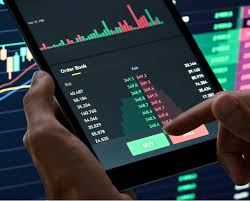
Exploring Crypto Trading Models: A Comprehensive Insight
In the world of cryptocurrency, trading models are crucial for making informed decisions. These models provide traders with frameworks that help analyze market movements, assess risks, and recognize potential opportunities. Whether you are a novice or a seasoned trader, understanding various crypto trading models can significantly enhance your trading experience and profitability. For more information on related topics, you can Crypto Trading Models visit website.
What are Crypto Trading Models?
Crypto trading models are systematic frameworks that traders use to make decisions regarding buying and selling cryptocurrencies. These models incorporate different methodologies and strategies, taking into consideration historical data, technical indicators, market sentiment, and sometimes even fundamental analysis. The goal of these models is to predict future price movements and identify the best times to enter or exit trades.
The Importance of Trading Models in Crypto
The cryptocurrency market is characterized by high volatility and unpredictability. Due to this nature, trading without a structured model can lead to impulsive decisions that result in losses. Trading models help to:
- Reduce Emotional Decision-Making: By relying on a structured approach, traders can minimize the impact of emotions on their trading decisions.
- Enhance Analysis: Crypto trading models enable traders to analyze various factors, including market trends and price patterns, providing a clearer perspective.
- Improve Risk Management: Models help in assessing and managing risk effectively, allowing traders to protect their investment.
- Streamline Strategy Development: A solid trading model serves as a foundation for developing personalized trading strategies.
Popular Crypto Trading Models
There are several trading models that traders can use. Here are some of the most popular ones:

1. Technical Analysis Models
Technical analysis involves using statistical trends from trading activity, such as price movement and volume. Traders rely on charts and technical indicators to identify patterns and make predictions. Some widely used indicators include:
- Moving Averages: Help identify the trend direction by smoothing out price data.
- Relative Strength Index (RSI): Measures the speed and change of price movements to identify overbought or oversold conditions.
- Bollinger Bands: Using standard deviations to determine volatility and price levels.
2. Fundamental Analysis Models
Unlike technical analysis, fundamental analysis focuses on evaluating a cryptocurrency’s intrinsic value. This approach examines factors such as technology, team behind the project, market demand, and external influences. Traders who utilize fundamental analysis often look for undervalued cryptocurrencies that have potential for growth in the long term.
3. Sentiment Analysis Models
Sentiment analysis gauges the emotions and attitudes of market participants. This is often achieved through social media, forums, and news analysis. By understanding the general sentiment around a cryptocurrency, traders can predict potential price movements, as positive sentiment may lead to buying pressure, while negative sentiment may trigger selling.
4. Algorithmic Trading Models

Algorithmic trading utilizes automated systems to execute trades based on predefined criteria. Algorithms analyze market data, execute orders, and manage portfolios with minimal human intervention. This approach allows for faster execution and can capitalize on market inefficiencies more effectively than manual trading.
Building Your Own Crypto Trading Model
Developing a personalized trading model involves several steps:
- Define Objectives: Establish clear goals for your trading activities.
- Choose a Strategy: Decide whether you will follow technical, fundamental, or sentiment analysis.
- Backtest: Test your model against historical data to assess its effectiveness.
- Refine and Adapt: Continuously evaluate and adjust your model based on performance and changing market conditions.
- Manage Risks: Incorporate risk management techniques to protect your investments.
Common Mistakes to Avoid
As you venture into the world of crypto trading models, be wary of common pitfalls:
- Ignoring Risk Management: Always implement a risk management strategy to safeguard your capital.
- Overtrading: Trading too frequently can lead to unnecessary losses and stress.
- Focusing on Short-Term Gains: Short-term strategies may yield quick profits but can also attract significant risks.
- Lack of Adaptability: The crypto market is ever-evolving; it’s essential to adjust your strategies accordingly.
Conclusion
Crypto trading models are essential tools for any trader looking to navigate the complexities of the cryptocurrency market. By understanding and utilizing various trading models, you can make informed decisions, manage risks effectively, and enhance your trading outcomes. Whether you’re a novice or an experienced trader, investing time in learning different models will undoubtedly pay off in the long run.
